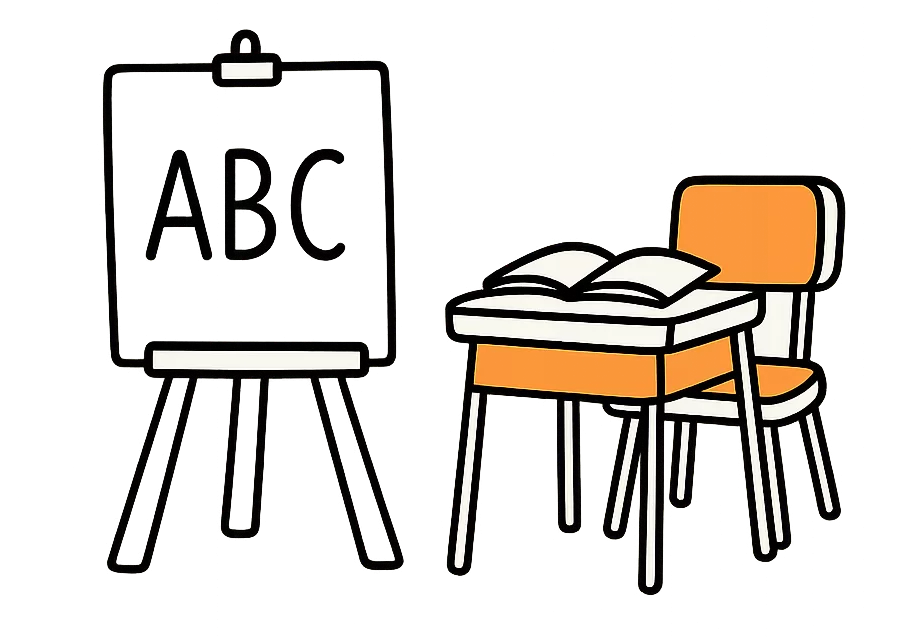
Learning is a discreet endeavour. It happens invisibly, in the privacy of students’ minds, and often with little outward sign. This is the central dilemma of teaching: we are tasked with fostering a transformation we cannot directly observe. The classroom may be busy at work, the teaching captivating, the tasks engaging—but are students actually learning?
This is why lesson planning must be about more than choreography or performance. A good lesson is not one that merely looks effective, but one that is structured to maximise the likelihood that learning takes place. As I’ve argued before, good teaching is grounded in purposeful design, deliberate practice, and cognitive realism.
So how should we plan and deliver lessons to create the conditions for learning? In the last twenty years of practice, I have settled on the following central tenets as the keystones of good learning:
Start with the End in Mind
Begin by clarifying what students should know, understand, and be able to do by the end. As Dylan Wiliam puts it, “If you don’t know where you’re going, you’re unlikely to get there.” Define learning intentions with precision, and design success criteria that make them visible. Students need to know not just what they are doing, but why—and how they’ll know if they’re doing it well.
Activate Prior Knowledge
Learning is not the mere accumulation of facts but the integration of new knowledge with what students already know. Daniel Willingham reminds us that prior knowledge is the strongest predictor of how well we learn something new. Use questioning, retrieval practice, or concept mapping at the start of a lesson to surface existing understanding—and expose misconceptions that may need attention.
Limit Cognitive Load
Working memory is finite. Overwhelm students with too much information, too many distractions, or overly complex tasks, and you risk stalling the very processes you’re trying to ignite. As John Sweller’s Cognitive Load Theory suggests, we should reduce extraneous load and focus attention on core ideas. This might mean modelling step-by-step, breaking content into manageable chunks, or using visuals to anchor thinking.
Make Thinking Visible
If learning is invisible, then we need proxies—glimpses into what students are thinking. This is where questioning, discussion, and formative assessment become essential. Cold calling, hinge questions, and mini-whiteboards (tablets such iPads work well for this if available) provide quick, useful windows into student understanding, helping us make informed, responsive decisions in the moment.
Build in Deliberate Practice
Understanding alone isn’t enough. Learning requires rehearsal. Robert and Elizabeth Bjork’s research into desirable difficulties shows that students benefit from effortful retrieval, spaced practice, and variation. Tasks should challenge learners to recall, apply, and adapt their knowledge—not just repeat it. Avoid the trap of ‘activity-rich, learning-poor’ lessons by ensuring tasks remain tightly aligned to the learning goal.
Create Coherence and Continuity
No single lesson can carry the full weight of the curriculum—but it should form a meaningful part of a coherent whole. Students benefit from clear narrative threads that run across lessons, helping them build secure mental models. Refer back. Link forward. Signpost connections. Learning thrives on structure.
End with Reflection and Rehearsal
The final minutes of a lesson are precious. Don’t use them to rush through a plenary. Instead, consolidate. Invite students to summarise, explain, or reframe what they’ve learned. Ask: What’s the most important idea from today? What’s still unclear? What might you be asked next time? In doing so, you help students encode knowledge more securely—and prepare for what’s to come.
Attend to How Students Feel
Finally, it is important to recorgnises that learning is not just a cognitive endeavour; it is also emotional and relational. Students are more likely to engage and persevere when they feel safe, supported, and seen. A teacher’s tone, clarity of expectations, and presence all shape the emotional climate of the classroom. Warmth and strictness need not be in opposition; in fact, they work best together. High challenge should always be paired with high support.
As educators, we are not merely transmitters of knowledge—we are also curators of atmosphere. A raised eyebrow, a word of encouragement, or a moment of genuine interest can help create the conditions in which students feel brave enough to think deeply, risk getting it wrong, and try again.
My final reflection would be that learning is slow, often hidden, and revealed only in fragments. We may not see it unfold in real time, but through careful teaching—through questioning, retrieval, and connection—we gently uncover and shape understanding. Great teaching leaves behind evidence of something deeper taking form beneath the surface.
Ultimately, the best lessons are those that respect the complexity of learning. They don’t confuse busyness for progress or performance for substance. Instead, they rest on firm foundations: research, experience, thoughtful design, and the understanding that no amount of careful planning will succeed if students don’t feel able—or willing—to learn. Teaching, at its heart, is a human exchange. And though we may not always witness learning as it happens, we can trust that, with the right conditions, it will take root.

Subscribe to our newsletter
- Actionable insights on leadership, learning, and organisational improvement
- Thought-provoking reflections drawn from real-world experience in schools and beyond
- Curated resources on effective practice and digital strategy
- Early access to new articles, events, and consultancy updates
- Invitations to subscriber-only webinars, Q&As, and informal conversations
- Clarity, not clutter—you will not be bombarded by emails
Cancel or pause anytime.

Leave a Reply